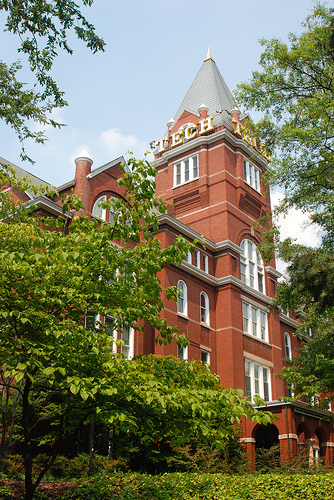
Photo of grad students courtesy of Vancouver Film School.
How can planners direct optimal, sustainable neighborhood development? Increasingly complex urban land use models have been developed to facilitate this task.
My dissertation research involved the best way to identify neighborhoods in hedonic pricing models1 and the types of households (based on income and demographic characteristics) most likely to move into a particular neighborhood. I studied an Atlanta neighborhood just north of Georgia Tech called Home Park to determine what types of residents were living there at the time and what motivated them to choose their current housing. I then developed a hedonic pricing model that used a novel statistical approach to estimate the effects of demographic, physical, and spatial characteristics on housing prices in the neighborhood.
Well, apparently the types of persons living in Home Park has solidified enough that Zillow recently added segmentation data for this neighborhood. After years of college students and urban professionals living in the neighborhood, the market solidified enough to reveal the main types of people who live here:2

Photo of Tech Tower courtesy of Foto-Leo.
1. Power Singles – High-income urban singles. Highly educated professionals, many with advanced degrees. They draw a handsome salary and have reasonable living expenses while living a hip, upscale life in an urban center.
2. College Life – Students in higher education. These individuals are enrolled in college or graduate school. People in college or graduate school.
3. Bright Lights, Big City – Very mobile singles living in the city. Singles ranging in age from early 20s to mid-40s who have moved to an urban setting. Most rent their apartment or condo. Some have a college education and work in services and the professional sector.
If you read my published articles, these are remarkably similar to the three types I identified as early as 2002.
My urban housing model provided insight into the implications of one neighborhood’s economic, demographic, and spatial composition. One potential use of this research is to combine urban planning and policy with economic incentives to shape community master plans so they best achieve the desires of all urban residents.
Companies like Greenfield Advisors can predict how neighborhoods will change based on the types of households that currently live there and who would likely move in response to physical changes (such as development of new parks) or policy changes (such as zoning restrictions). However, it takes very detailed data to do this kind of work, meaning it is expensive to do. Most local governments simply cannot afford to pay the current costs for this kind of insight into their neighborhoods. If local governments did choose to analyze their neighborhoods in this way, predicting the results of specific economic development strategies would be less uncertain.





Recent Comments